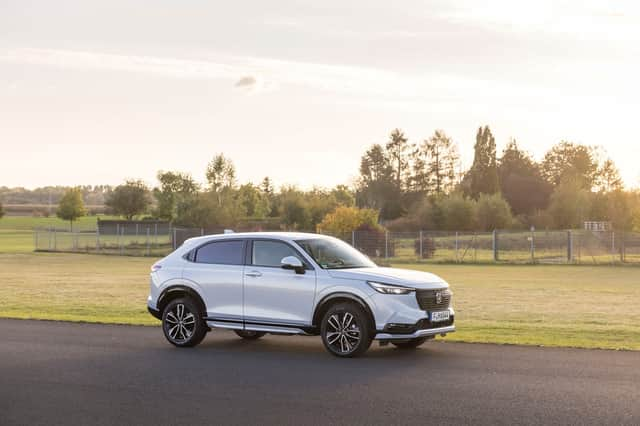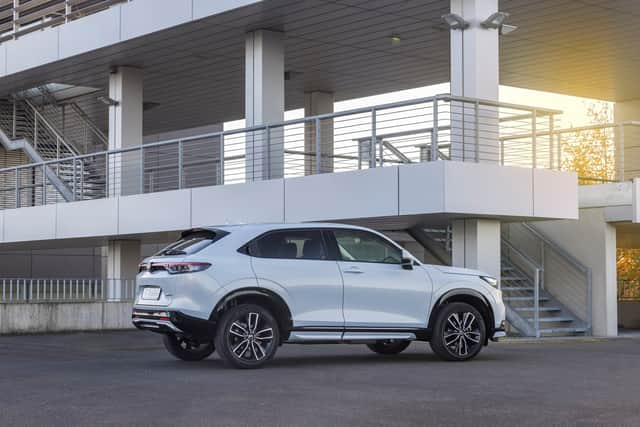2021 Honda HR-V hyrbid review: It’s nice to be nice


When one of the highlights of your new car is an L-shaped air vent at either side of the dashboard, you might think that there’s not going to be much positive to talk about. It’s true that the new Honda HR-V might isn’t the most exciting new car to be launched this year, but there has to be more to it than some funky air vents, hasn’t there?
It certainly needs something else, as a quick look at competing cars soon turns into a far longer look - I can list 30 potential rivals, from obvious choices such as the Ford Puma, Peugeot 2008 and Nissan Juke to more niche products like the Jeep Renegade.
Advertisement
Hide AdAdvertisement
Hide AdHonda HR-V engine and performance
Honda tends to make a more innovative stand than most of its rivals, and that starts with the engine. Hybrid technology is well established, but the HR-V’s clumsily named ‘e:HEV’ system has a trick up its sleeve that Honda claims balances emissions, economy and performance better than the competition.
Under the bonnet is a conventional 1.5-litre petrol engine that’s supported, like every other hybrid, by an electric motor. Honda’s trick is to be able to entirely disengage one or the other from the driveline. That sounds like an obvious thing to do, but it’s something nobody else is doing. That means motorway driving can be petrol-powered but without any drag on the engine from the electric motor, which saves fuel. Likewise, in pure electric modes, the engine is decoupled which reduces friction losses in the system and lets you go further on each kWh of energy.


Does it work? After a day driving the new model around, including pushing it to its maximum speed along an autobahn for some time, the car’s trip computer showed a result of 53.0mpg - slightly better than the official WLTP economy figure of 52.3mpg. Given that the car was punished rather more than the average UK driver might manage, it seems reasonable to expect more frugal motorists to easily achieve 60mpg.
Despite the impressive economy, performance hasn’t been limited too much. According to Honda, the 0-62mph dash is dealt with in 10.7 seconds but, as with so many electrically powered cars, it feels rather more urgent than that at urban speeds. There’s a zestiness to the acceleration that’s immediate and impressive, but it runs out once speed increase to 50mph or so. On Germany’s fast autobahns, acceleration at higher speeds is measured in glacial terms, but it’ll be easy to live with in the UK.